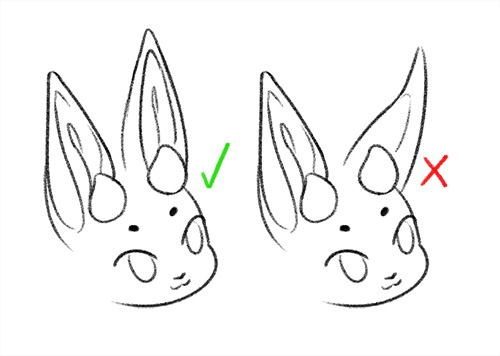Mutations
Scales
Species: Elnin
Type: Mutation
Rarity: Exotic
Region: Bellmoril
Is Hereditary?: Yes
Standard scales are small scales similar to those you might find on a reptile or fish. These scales are generally small in size.
Toggle Minimize Trait Examples
 Standard
Standard
 Standard
Standard
 Scales on Grove Tail
Scales on Grove Tail
 Scales on Shoal Tail
Scales on Shoal Tail
 Spread Sparingly
Spread Sparingly
 Standard
Standard Standard
Standard Scales on Grove Tail
Scales on Grove Tail Scales on Shoal Tail
Scales on Shoal Tail Spread Sparingly
Spread SparinglyDetails:
- Standard scales should not cover more than 50% of the elnin.
- Are small and generally more oval/soft-edged diamonds (like snake scales) or half-moon (like fish scales) in shape. Keeled scales are also allowed.
- Standard scales are generally staggered or clustered relative to each other, but not always.
- Scales should be three dimensional and rendered either with or without lineart.
- Standard scales most often appear across the back, shoulders, and sparsely down the tail (in areas of short fur on tails like grove or shoal) if at all.
- Tails will never be fully scaled with this mutation, unless a subtype specific or rarer scaled tail style is present on an elnin.
- Scales should not imitate gems or markings. They must be distinctly read as scales.
- What can affect the standard scales?
- YES: Body suffusion mutations, such as metallic suffusion, shimmering suffusion, iridescent suffusion, starlit suffusion, emberglow suffusion, and luminous suffusion. Body suffusion mutations cannot only affect scales and must also be present in other non-scaled locations.
- NO: Anima mutations would not affect scales (*Unless crystallization is present on the scales, in which case anima mutations would be localized on scales and any related effects would be in very very close proximity to the scales themselves.)
Spinal Ridge
Species: Elnin
Type: Mutation
Rarity: Uncommon
Region: Bellmoril
Is Hereditary?: Yes
A pronounced line of fur running up from the tail and/or down the neck. Can be a full or broken line between the neck and tail.
Upright/Forward-facing Ears
Species: Elnin
Type: Mutation
Rarity: Uncommon
Region: Bellmoril
Is Hereditary?: Yes
Ears that are perpetually upright and perked forward as if at attention. Standard ears lack the range of motion to rotate forward in this manner.
Details:
- Upright ears are naturally pointed at their tips, but fluffy tipped upright ears are also an option
- Keep in mind that upright ears should mostly be facing forward. They can rotate slightly, but not to an extreme degree.
Toggle Minimize Mini Guides


4 results found.



